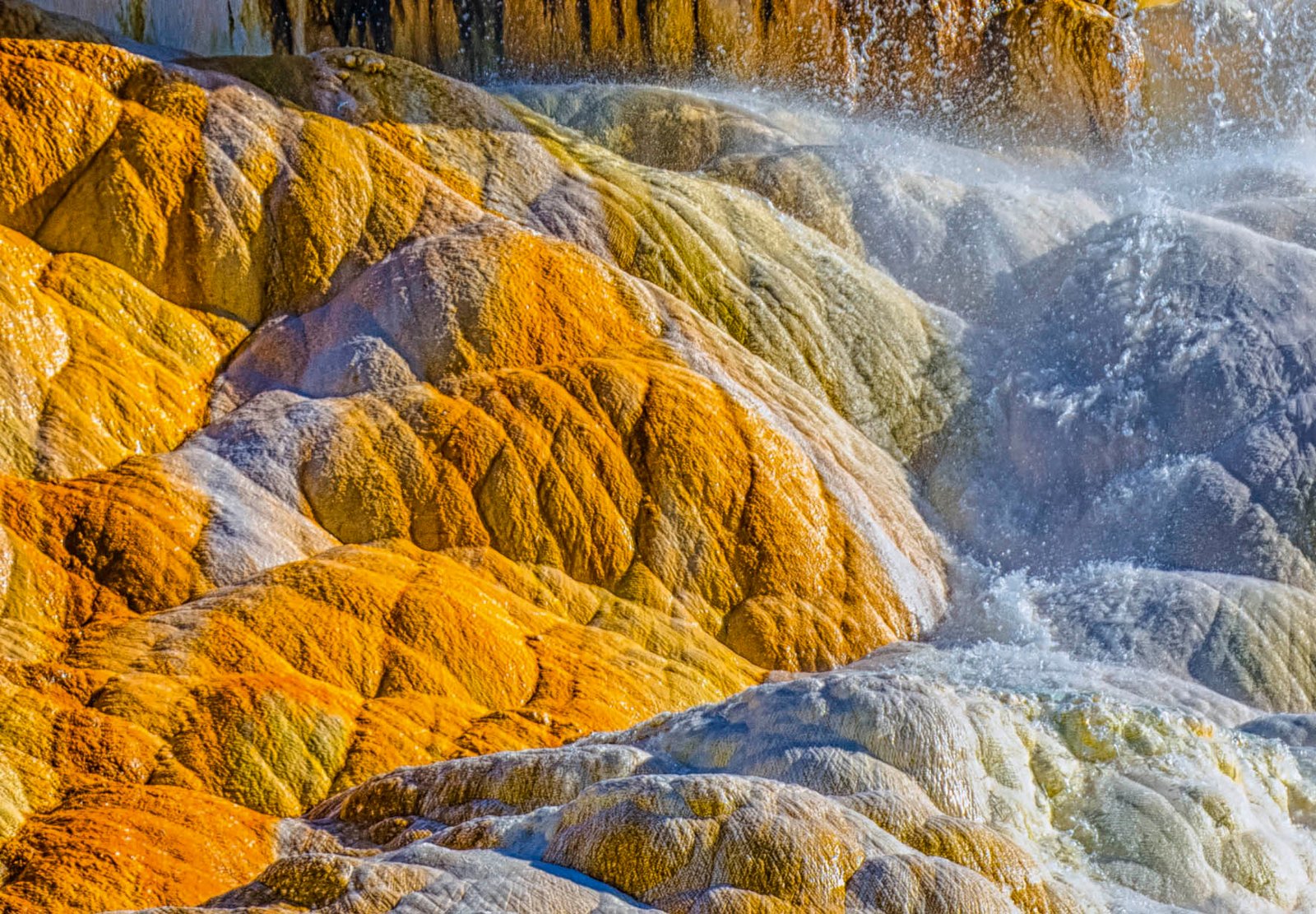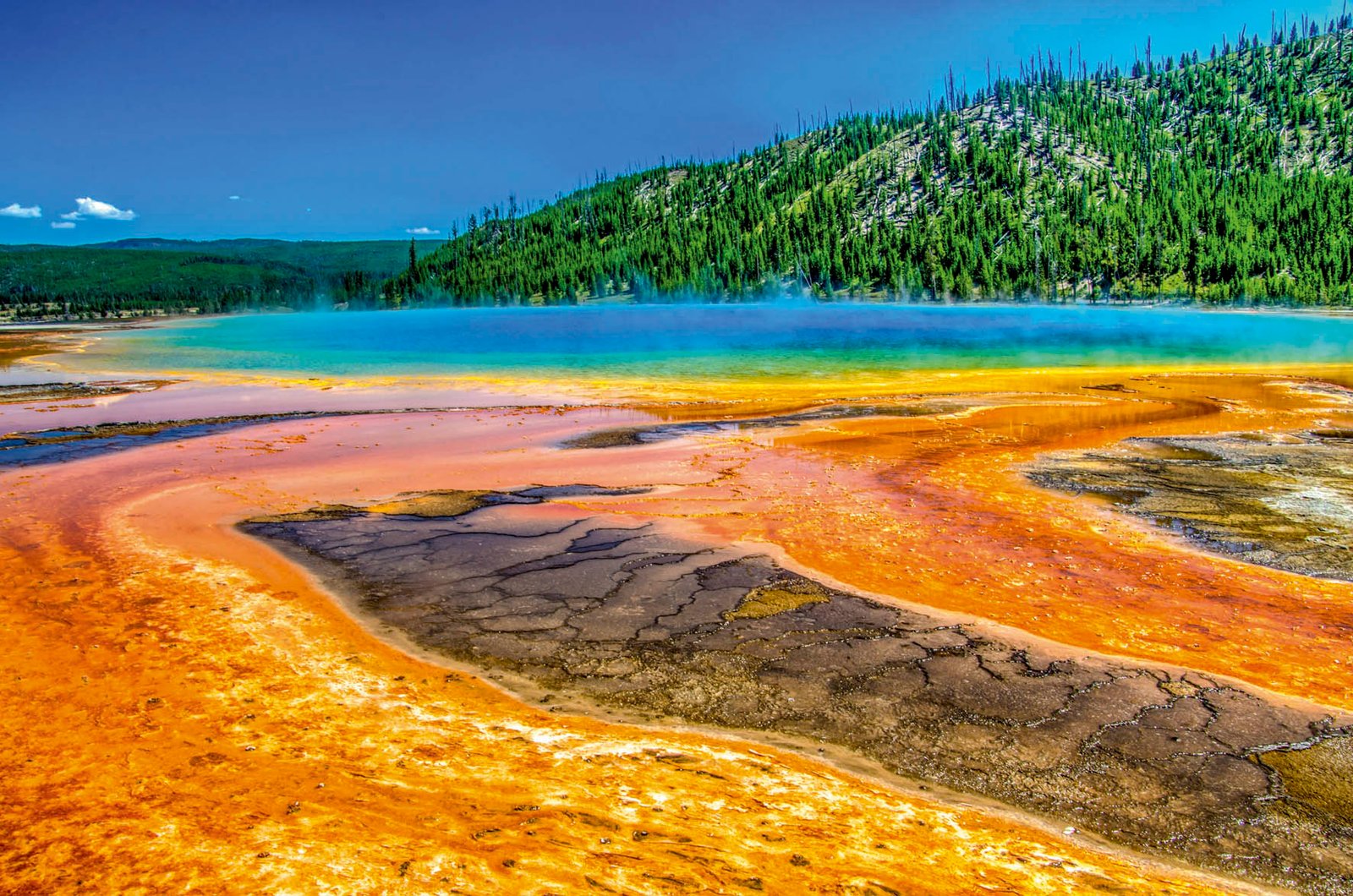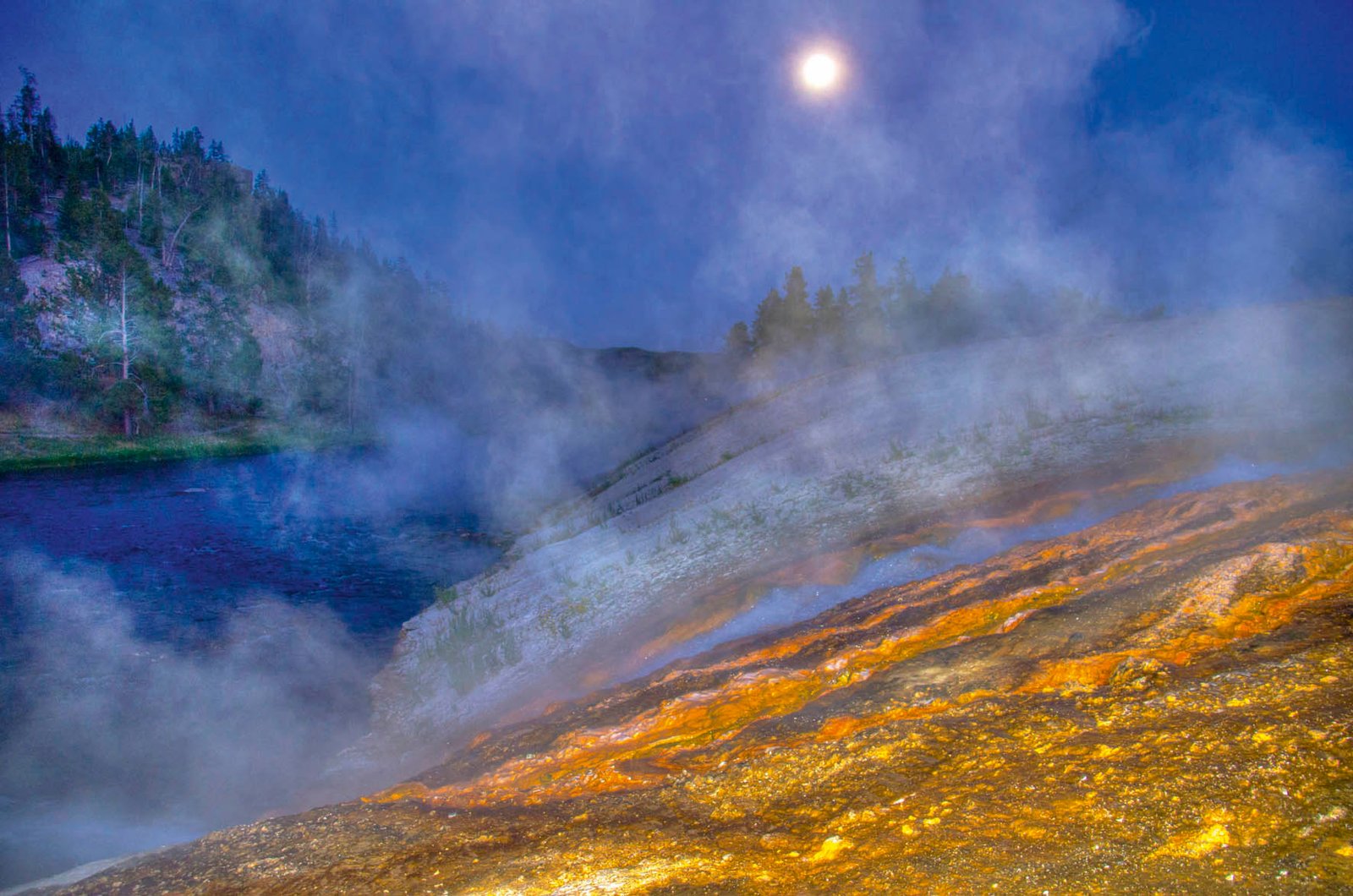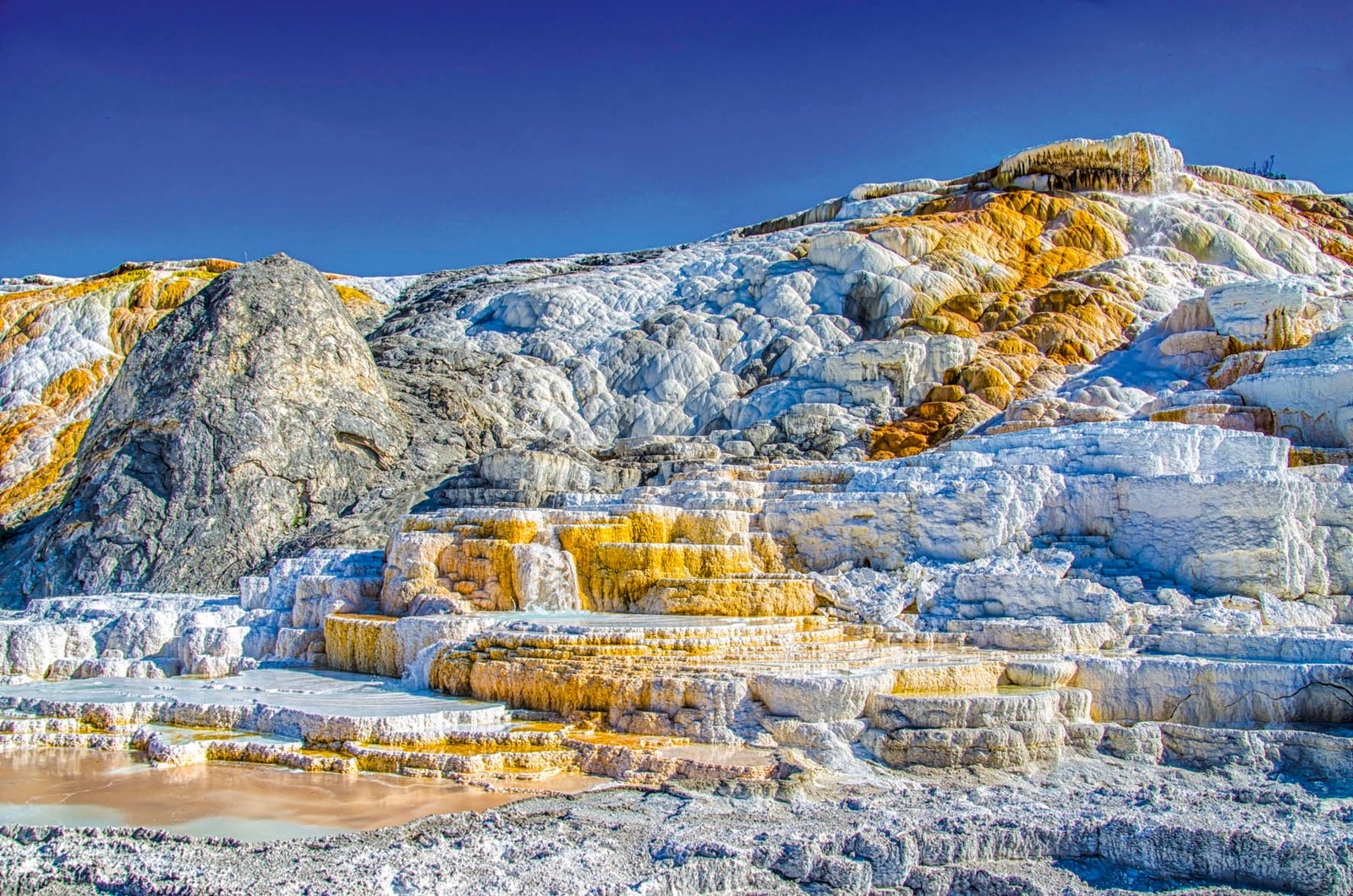
Yellowstone’s Extremophiles
Text and potos: Javier A. Pinzón
We have creatures on our planet that are so amazing and strange they seem to have come from another world. Among them are organisms accustomed to living in extreme conditions, called “extremophiles.” They were discovered in the 1970s, when a group of biologists found life in places where they never thought it would exist. Extremophiles are microorganisms with ancient DNA that thrive in the hot springs of Yellowstone National Park. These microorganisms can survive in boiling waters, where they flourish, giving the springs their particular color: yellow, orange, red, green, or brown. To describe these creatures, scientists invented the term “extremophiles,” which means “lovers of extreme conditions.”
Yellowstone is their home. They are thermophilic bacteria and, when joined together, they form long threads known as filaments, creating mini-ecosystems that resemble small, colorful forests. Like a forest canopy, microbes that live on the surface of bacterial carpets perform photosynthesis to provide energy to the community. They also decompose and recycle nutrients, contributing to the ecosystem’s health.

These extreme organisms live on the banks of mineral-rich springs and their spectacular colors create a prism that frames the bubbling turquoise-blue water. The color depends on their levels of chlorophyll or carotenoids and their ability to tolerate extreme temperatures.
But how is it possible that these bacteria can withstand temperatures so extreme that they reach 203 °F? Scientists have found that thermophiles have developed several adaptations, such as generating enzymes and very stable proteins that require high temperatures for proper functioning. Additionally, their many ionic bonds and densely packed proteins make them resistant to denaturation (loss of their structure). As well as having a very stable cell membrane, they have lipids rich in saturated fatty acids, which allow the membranes to be functional at high temperatures. Below we list some of these lovers of the extreme.
Aquifex aeolicus
 These bacteria can develop at a temperature of 203 °F, pushing the limit of temperatures at which normal bacteria can survive. They are found in the Grand Prismatic Spring, where they can perform biosynthesis and develop using the hydrogen, oxygen, carbon dioxide, and minerals in the thermal springs. Their breathing method produces water as a byproduct, hence the name Aquifex, which means “water producer.”
These bacteria can develop at a temperature of 203 °F, pushing the limit of temperatures at which normal bacteria can survive. They are found in the Grand Prismatic Spring, where they can perform biosynthesis and develop using the hydrogen, oxygen, carbon dioxide, and minerals in the thermal springs. Their breathing method produces water as a byproduct, hence the name Aquifex, which means “water producer.”
Thermus aquaticus

This extremophile was discovered in 1966 in the Lower Geyser Basin. It thrives in high temperatures of 122 to 176 °F and forms bright red or orange ribbons. The Thermus aquaticus has become famous for being one of the pillars of molecular biology, since it is a source of thermostable enzymes (particularly the Taq DNA polymerase), which are used in the popular DNA amplification technique, polymerase chain reaction (PCR), a process that amplifies short DNA segments.
Cyanobacteria

Cyanobacteria can survive in water at a temperature of up to 163.4 °F and, depending on the temperature, their color can vary between brown, green, yellow, or orange. Three billion years ago, this type of bacteria became the first photosynthesizer, thus contributing to the creation of the oxygen-rich atmosphere that we enjoy today. They can be found in the Fountain Paint Pot Nature Trail.
Caldicellulosiruptor obsidiansis

Discovered on the periphery of the Obsidian Pool, its optimal growth temperature is 172.4 °F. This extremely thermophilic and cellulose organism ferments many carbohydrates, including glucose, maltose, arabinose, and fructose. Scientists study these bacteria to develop a genetically modified thermophilic anaerobe capable of converting grass into ethanol.
Chlorobium

These bacteria form dense, dark green carpets, which can be observed at the Mammoth Hot Springs and Calcite Springs. Their optimal growth temperature ranges from 89.6 to 125.6 °F. They are photolithotrophic sulfur oxidizers and possess two complexes of photosynthetic antennas that aid in the absorption of light. It is believed that the Chlorobium species has played an important role in the events of mass extinction on our planet. If the oceans become anoxic (oxygen-deficient, due reduced oceanic circulation), these bacteria could compete with photosynthetic organisms, producing enormous amounts of methane and hydrogen sulfide, with resulting global warming and acid rain. Chlorobium is one of the reasons that Yellowstone reminds us of the beginning and end of life on Earth.



